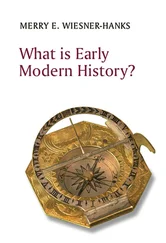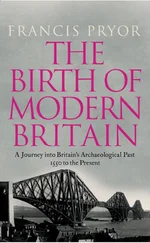R. Nisbet Bain - The Cambridge Modern History
Здесь есть возможность читать онлайн «R. Nisbet Bain - The Cambridge Modern History» — ознакомительный отрывок электронной книги совершенно бесплатно, а после прочтения отрывка купить полную версию. В некоторых случаях можно слушать аудио, скачать через торрент в формате fb2 и присутствует краткое содержание. Жанр: unrecognised, на английском языке. Описание произведения, (предисловие) а так же отзывы посетителей доступны на портале библиотеки ЛибКат.
- Название:The Cambridge Modern History
- Автор:
- Жанр:
- Год:неизвестен
- ISBN:нет данных
- Рейтинг книги:4 / 5. Голосов: 1
-
Избранное:Добавить в избранное
- Отзывы:
-
Ваша оценка:
- 80
- 1
- 2
- 3
- 4
- 5
The Cambridge Modern History: краткое содержание, описание и аннотация
Предлагаем к чтению аннотацию, описание, краткое содержание или предисловие (зависит от того, что написал сам автор книги «The Cambridge Modern History»). Если вы не нашли необходимую информацию о книге — напишите в комментариях, мы постараемся отыскать её.
The first series was planned by Lord Acton and edited by him with Stanley Leathes, Adolphus Ward and George Prothero.
The Cambridge Modern History Collection features all five original volumes:
Volume I: The Renaissance
Volume II: The Reformation, the End of the Middle Ages
Volume III The Wars of Religion
Volume IV: The 30 Years' War
Volume V: The Age of Louis XIV
The Cambridge Modern History — читать онлайн ознакомительный отрывок
Ниже представлен текст книги, разбитый по страницам. Система сохранения места последней прочитанной страницы, позволяет с удобством читать онлайн бесплатно книгу «The Cambridge Modern History», без необходимости каждый раз заново искать на чём Вы остановились. Поставьте закладку, и сможете в любой момент перейти на страницу, на которой закончили чтение.
Интервал:
Закладка:
Montaigne was perhaps only half serious. Yet such views commended themselves more or less to perfectly serious thinkers in other European countries; and they accorded with a feeling, which had long been gaining ground, of revolt against the hollow pageantry, the rigid social and political forms, the grasping at an empty show of power and dignity, which marked medieval life, and of expectation advancing towards more of simplicity, sincerity, and accordance with truth and nature. These views affected men’s religious conceptions, and had something to do with the Protestant and Puritan views of religious duty and theory. They were more amply represented in the Quakerism of a later age; and while they originated in the Old World, they had their freest and fullest development, as will appear later on in this History, in the New. Held in check in Europe, where power tenaciously clung to the machinery of feudalism, they fermented in, and began to permeate, social strata on which that machinery rested with crushing weight, and produced those revolutionary and socialistic doctrines which have so largely affected modern European society, but have found less favour in America. The emigrant in the New World was conscious of breathing different air. In this spacious continent much seemed trifling, and even ridiculous, which had commanded his respect, and even devotion, at home. Much of the burden of the Past seemed to fall from his shoulders. Industry ensured subsistence, even to the poorest: security of subsistence led by an easy transition to competence, and often to affluence. In all these stages a general sense of independence was fostered, felt in different degrees in different parts, but common, to some extent, to the Spanish landowner among his Indian serfs, the sugar-planter among his slaves, the missionary among the converts he was reclaiming from savagery, and the peasant wrestling with the forest and turning it into an expanse of fertile fields. The political tie which bound the emigrant to the European power commanding his allegiance was scarcely felt. The merchant made large profits: capital earned high interest. There was everywhere a large measure of freedom in local government. Even in Spanish America the European distinction between the noble and the plebeian was never introduced, nor could the Courts of justice exercise jurisdiction of hidalguia. Such a condition of things necessarily had its reaction on the mother countries: and Europe almost from the first felt that reaction, in however slight a degree.
In one respect the medieval constitution of Europe received from the New World, in the period immediately subsequent to the Discovery, a decided accession of strength. The conquest and settlement of Spanish and Portuguese America opened an immense field of operations to the Catholic Church; and this field was forthwith entered upon with extraordinary vigour and success. During the sixteenth century Rome was gaining in the New World more than she was losing in the Old. In Mexico, in Peru, and in New Granada foundations already existed from which the missionary had but to sweep away an effete superstructure to erect a loftier and more durable one. The aborigines were deeply imbued with religious ideas, and trained from childhood to regular habits of worship and ritual; the houses of the gods, numerous and often magnificent, were held in deep veneration, and endowed with extensive estates; the superiority of the great “Dios” of the Spaniards—a title understood by the Indians to be the proper name of a deity to whose worship the people of Europe were especially devoted—had been abundantly manifested in the military successes of his votaries; conversion was insisted on by the conquerors; and as the images of the old deities were destroyed, their shrines defaced, and their rites forbidden, compliance was dictated by the very spirit of aboriginal paganism. In Mexico, where the ancient rites demanded human sacrifices in vast numbers, and in a cruel and repulsive form, their abolition was effected with comparative ease. In Peru, where human sacrifice was chiefly limited to infant victims, who were simply strangled and buried, the Indians were more firmly attached to their old religion; and a serious obstacle to its abandonment lay in their devotion to the practice of ancestor-worship. Long after the mass of them had accepted the doctrine and practice of Christianity, they secretly offered sacrifice to the desiccated bodies of the dead; and a rigorous and prolonged inquisition had to be organised and carried into effect before the idolatry of Peru was extirpated. Meanwhile the settlement of the Church proceeded on the general lines recognised in Europe; but in America, as in the Spanish districts conquered from the Moors, the Holy See forbore some of its prescriptive rights in favour of the Crown. Notwithstanding the ordinances of the Lateran Council, Alexander VI in 1501 granted to the Crown all tithes and first-fruits in the Indies. The consideration for this “temporalisation” of property which of right belonged to the Church was the conquest of territory from infidels, and their conversion to Christianity. The right of patronage in all sees and benefices was also vested by the Pope in the Spanish sovereigns, as fully as had already been done in the case of the Kingdom of Granada, subject only to the condition that it should remain in the Crown inalienably. The Crown was further appointed the Pope’s legate in America. The limits of dioceses were at first laid down by the Popes; but even this right, together with the power of dividing and consolidating them, was granted to the Crown, and no American Bishop could return to Europe without the Viceroy’s licence. The Church in America held its own Councils, under the direction of the metropolitans of Mexico and Lima; and no appeal in ecclesiastical matters was carried to Rome. The Crown obtained the income of vacant sees, a part of which was assigned to the defence of the coasts against heretic pirates. These concessions were amply justified by the immense revenue which poured into Rome from Spanish America in the form of donations, of proceeds of bulls for the Holy Crusade, and of the sale of indulgences and dispensations. What the Holy See bestowed with one hand it received back, in larger measure, with the other.
Outside the limits of settled life the work of evangelisation was vigorously pursued by Franciscan, Dominican, and Augustinian friars, who from the first flocked to the New World in all its parts; but the chief share in this labour was borne by the newly-founded Company of Jesus. Among the exigencies which led to its establishment may certainly be reckoned the need of adequately grappling with the task of preaching Christianity in America, as well as in India and the Far East; and the numerous “Reductions” in the savage districts of North and South America abundantly testify to the devotion and energy of the Jesuit Fathers. At first the regular clergy greatly outnumbered the secular. In many cases they received, by dispensation, valuable benefices; and being in all respects better educated and trained than the secular clergy, they more easily acquired the American languages. The surplus incomes of these regularised benefices were remitted to the superiors of their incumbents in Europe, and were ultimately applied to the foundation of houses of the several Orders in the New World. The Franciscan, Augustinian and Jesuit colleges in Peru were in effect the chief centres of European civilisation; and the Jesuits have left a durable monument of their zeal in the Republic of Paraguay. To those members of these Orders who engaged in missionary work the ethnologist and historian are greatly indebted. But for their labours the deeply interesting history and folk-lore of Mexico and Peru would have been inadequately preserved, and the languages of many tribes outside the pale of settled life must have perished. Together with the fine churches attached to the mission settlements, the cathedral and parish churches of Spanish America, often built on the sites of ancient temples, form an unique series of historical monuments. Entirely built by native labour, and largely by voluntary contributions from native sources, they were to a great extent served by pastors of Indian or partly Indian descent—a class whom it was the policy of Spain to foster, and through which her control of her vast American dominions was in some measure maintained.
Читать дальшеИнтервал:
Закладка:
Похожие книги на «The Cambridge Modern History»
Представляем Вашему вниманию похожие книги на «The Cambridge Modern History» списком для выбора. Мы отобрали схожую по названию и смыслу литературу в надежде предоставить читателям больше вариантов отыскать новые, интересные, ещё непрочитанные произведения.
Обсуждение, отзывы о книге «The Cambridge Modern History» и просто собственные мнения читателей. Оставьте ваши комментарии, напишите, что Вы думаете о произведении, его смысле или главных героях. Укажите что конкретно понравилось, а что нет, и почему Вы так считаете.












